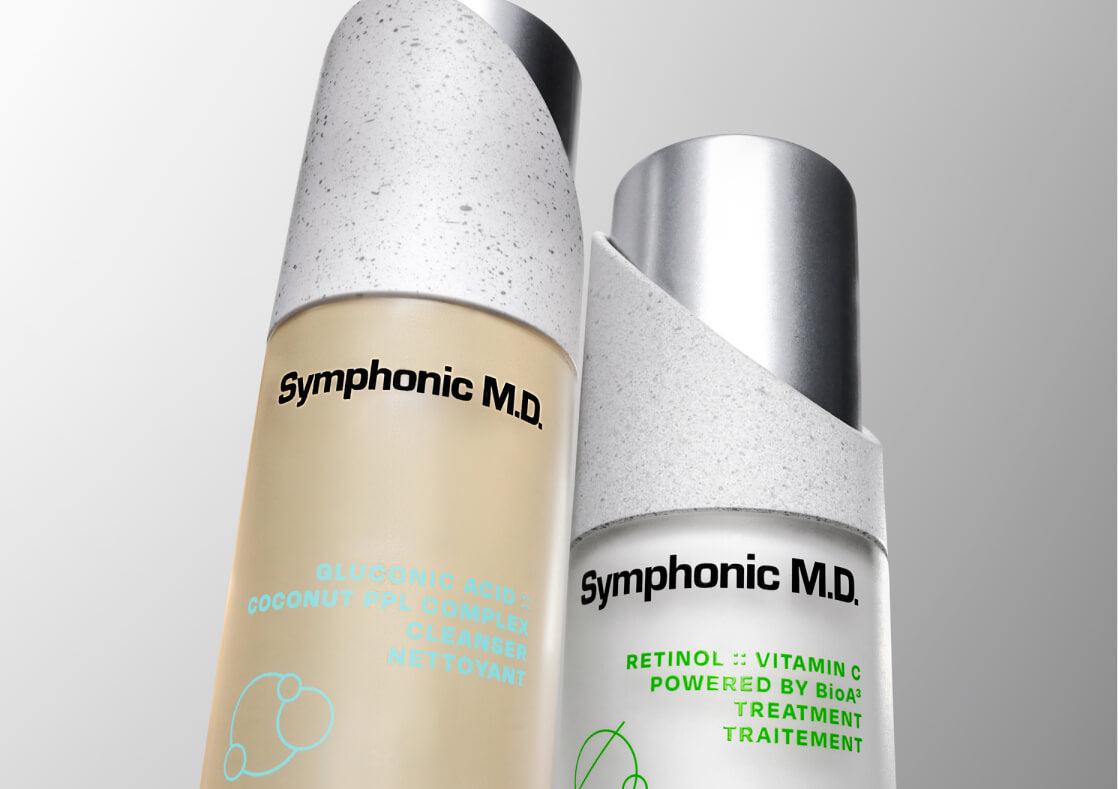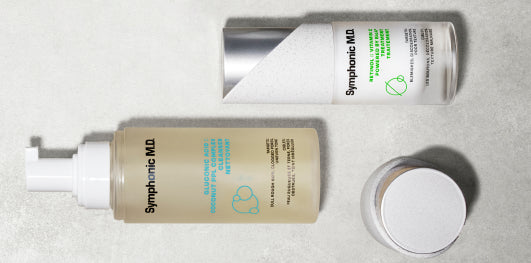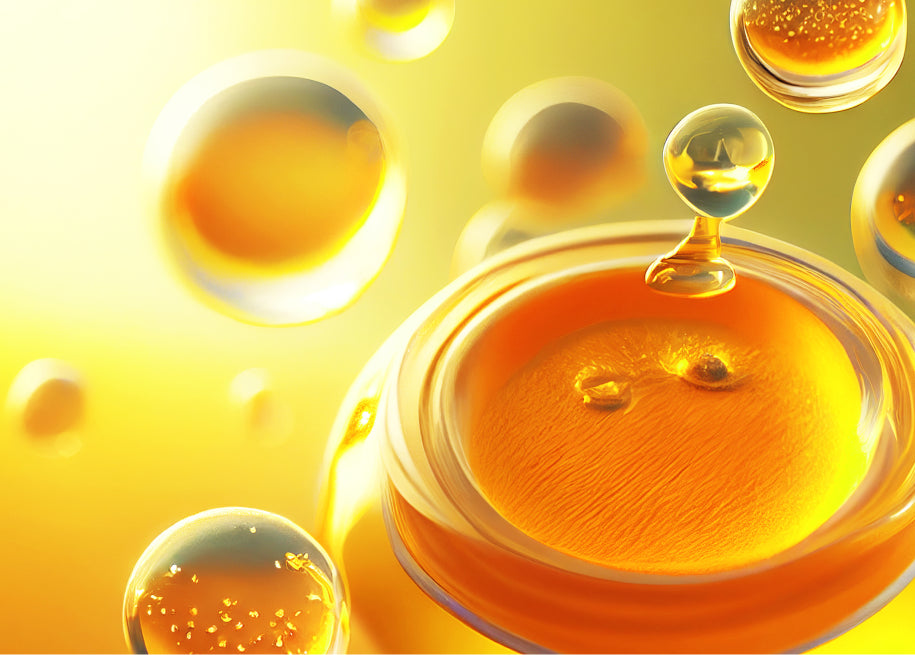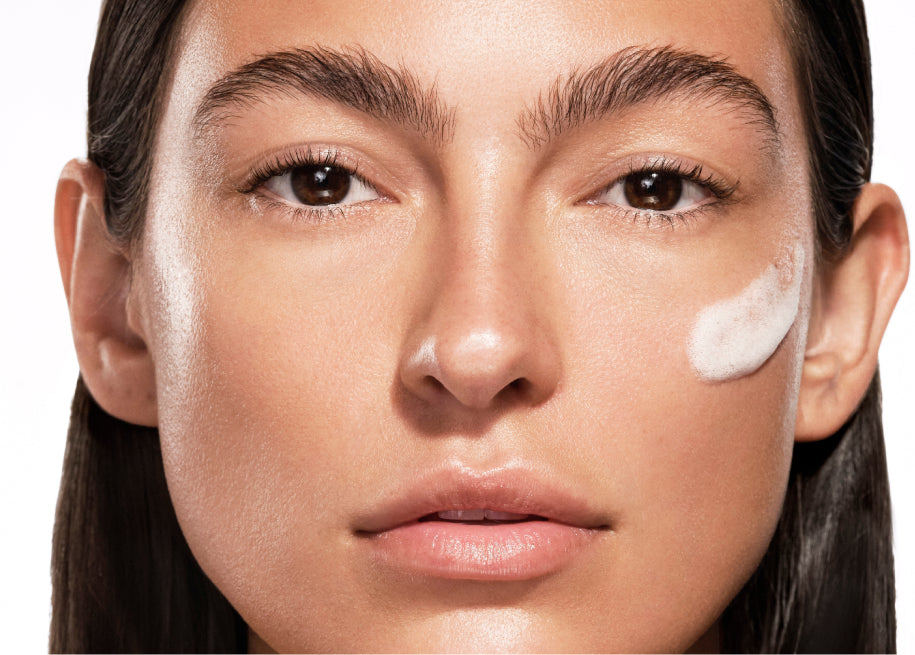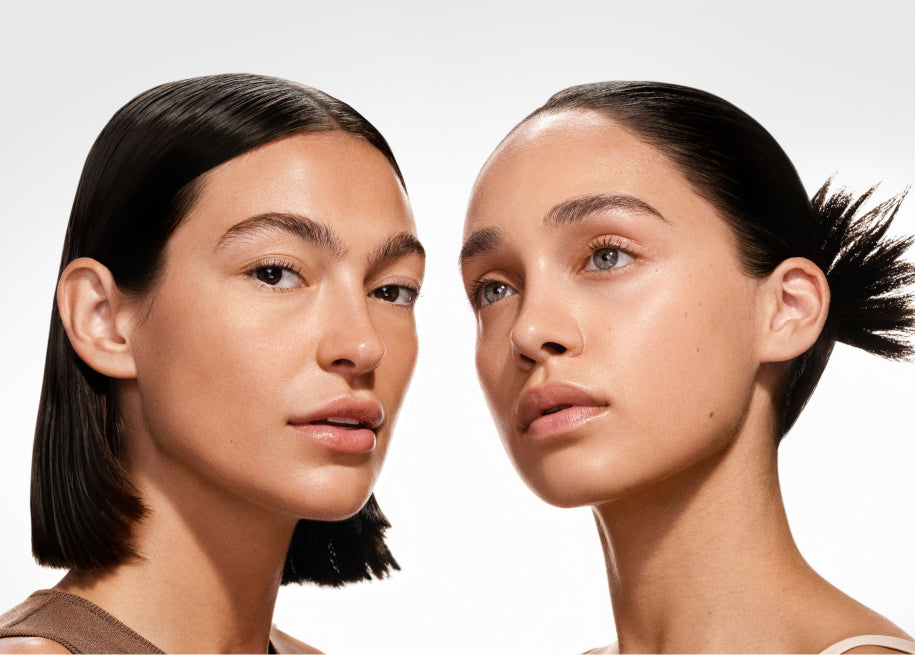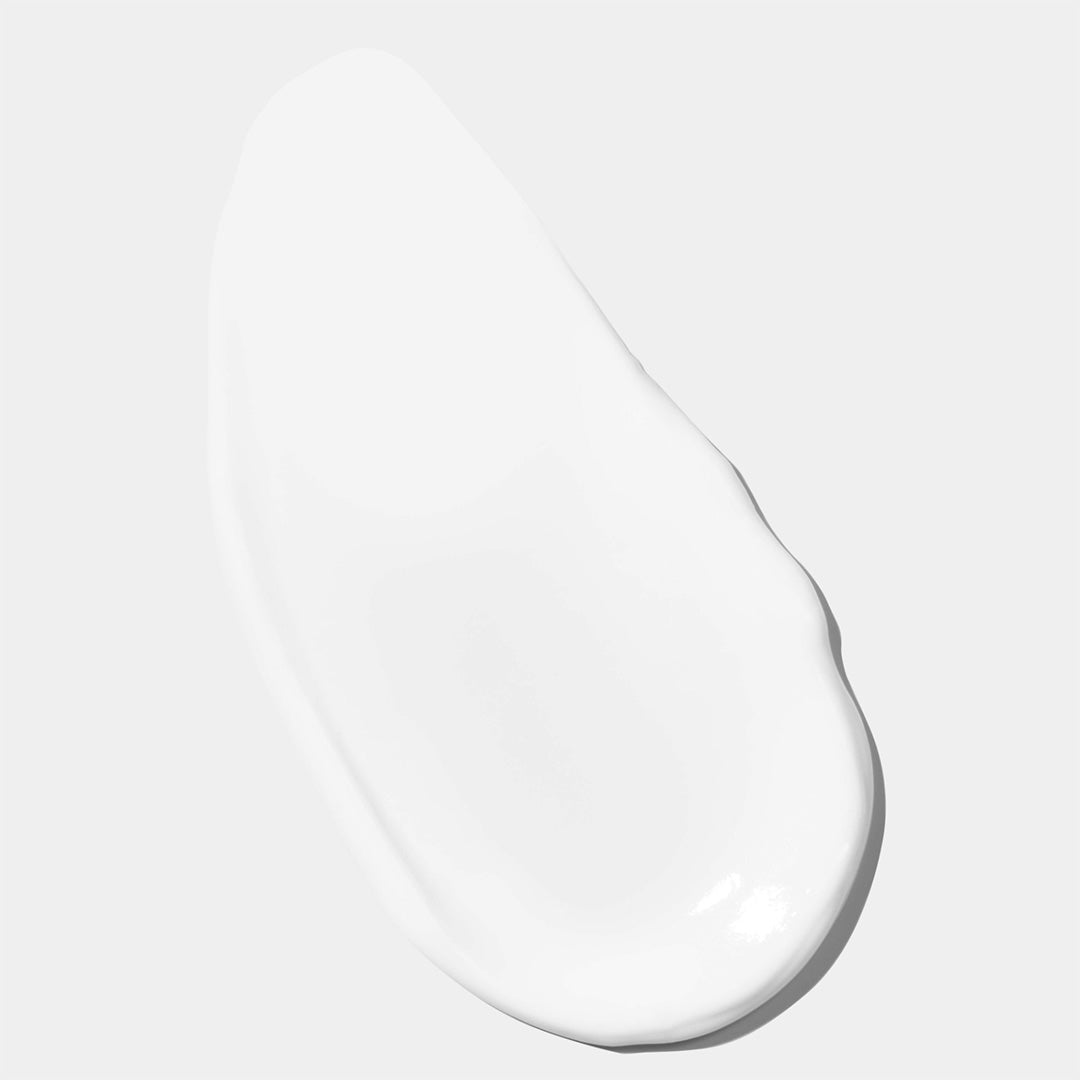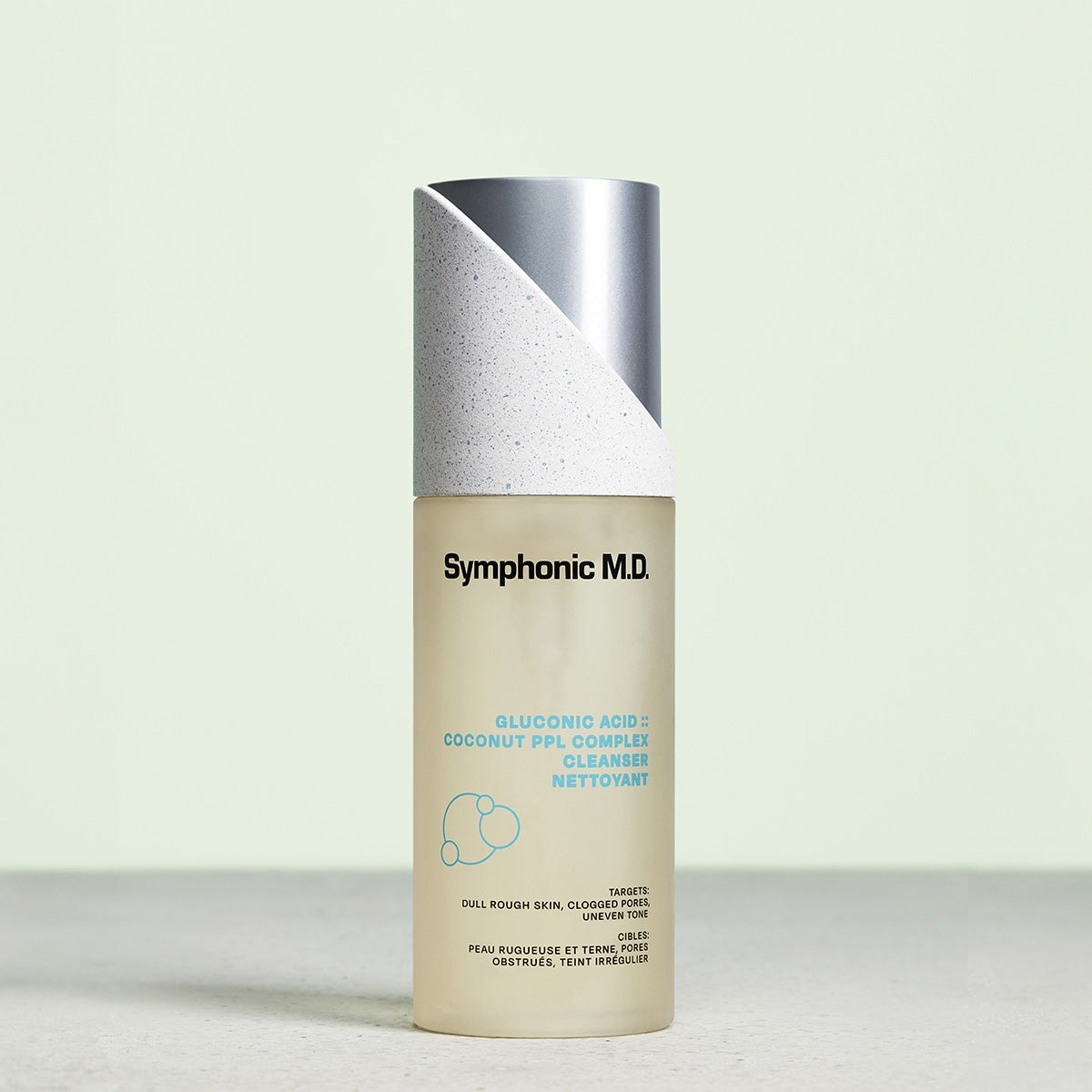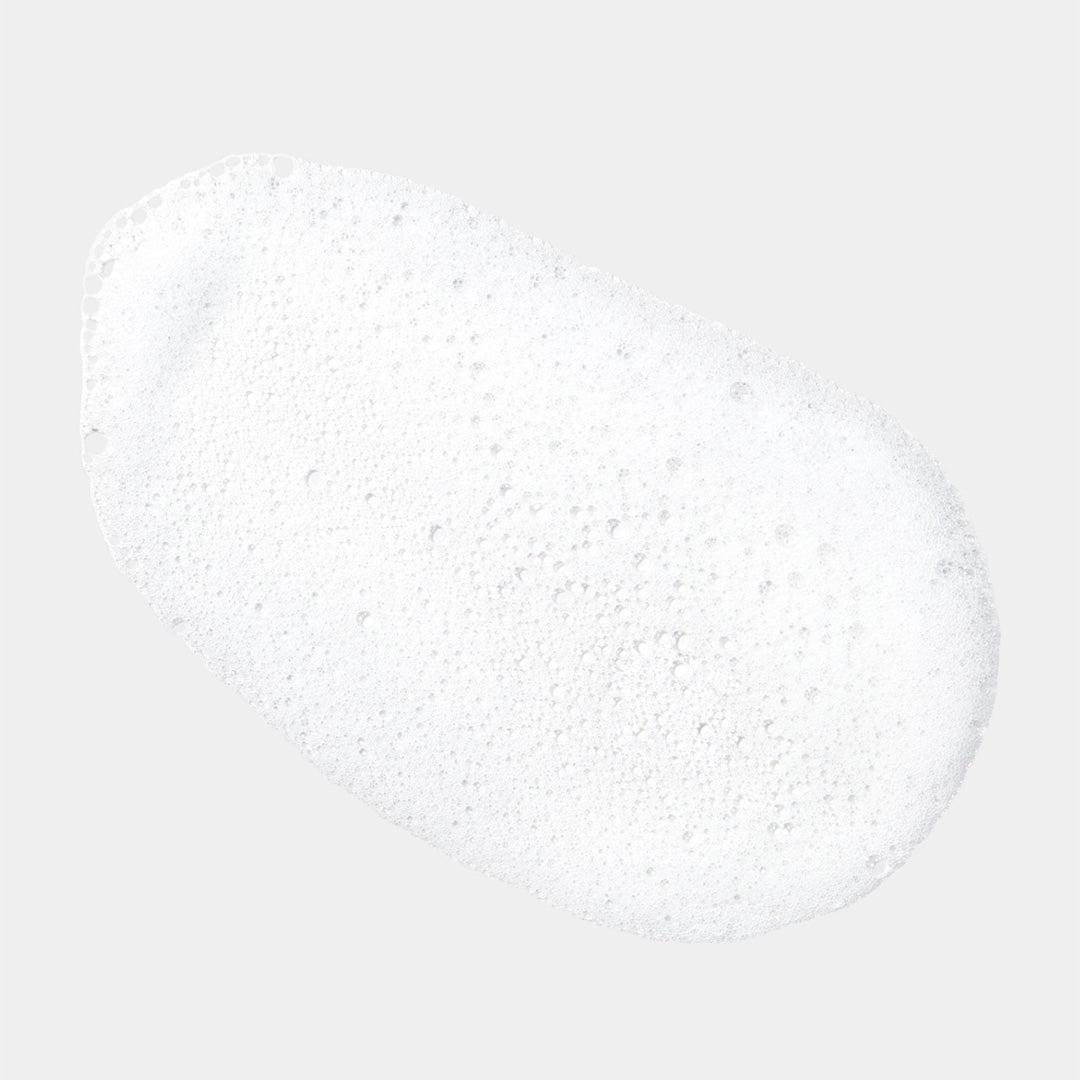Acne isn't just for pimply teens — it can affect grown men too. In fact, 95% of us will have acne at some point in our lives. Here's what you need to know about this tiresome condition and how to manage it … including the secrets of bacne, and how to shave without triggering spots.
What is men's acne?
Men's acne is just like the breakouts you had as a teenager and can often affect adult men.
Acne is caused when the hair follicles on your skin get clogged with oil and dead skin cells. Once the follicles are blocked, they can turn into pimples, blackheads, or whiteheads. Acne most commonly shows up on the face, neck, chest, and back. In skincare terms, it's all exactly the same!
For most people, breakouts are just an occasional annoyance. But acne can also be a severe and persistent condition that causes painful breakouts and acne scarring.
Here's the bad news, guys: although acne affects more adult women than men, you still have a few risk factors for bad skin. Here's why:
- Men produce more testosterone. One of the hormone's side-effects is thicker skin with more sebum (oil) production.
- If you have facial hair, it can trap sebum and dead skin, creating a breeding ground for pore-clogging bacteria.
- Sweating can also make acne worse, especially if you exercise frequently, wear artificial fabrics, or live in a hot climate.
What are the different kinds of male acne?
First, you need to know your enemy. There are seven main types of acne that you might find on your skin:
- Blackheads. When your pores are clogged, but stay open, air gets to the built-up gunk and makes it look black.
- Whiteheads. Similar to blackheads, these are clogged pores, but they stay closed — meaning that they look white instead of black.
- Papules. Also known as little red bumps. They can be sensitive to the touch.
- Pustules. These pus-filled pimples are visible on the surface of the skin.
- Nodules. Like pustules, these are pockets of pus — but they're hidden deeper in the skin. You may only see them as sensitive bumps on the surface.
- Cystic acne. Like nodules, but worse. Cystic acne causes large, pus-filled lumps to form deep in the skin. They're painful to the touch and can leave scars.
- Bacne. It's not an official medical term, but you've definitely heard of it. Acne on the back is common in men, often in combination with facial acne.
Does acne mean high testosterone?
When your hormones are out of balance, one of the first signs can be an increase in acne. That includes your testosterone levels. Both men and women have testosterone in their system — it's just that men tend to have more.
Men produce more testosterone. One of the hormone's side-effects is thicker skin with more sebum (oil) production.
Testosterone makes the oil glands in your skin more active, which can cause clogged pores. There's some evidence that people with acne may have higher testosterone levels than the rest of the population.
What causes acne in men?
There are lots of things which can trigger acne — and no, it's not just caused by eating too much fast food.
- Hormones. Hormonal changes can increase oil production in your skin. For example, most people get acne during puberty because their testosterone levels rise quickly.
- Medications. If you're on certain medications, such as corticosteroids or lithium, you might see an increase in acne. Talk to your doctor if you're concerned.
- Genetics. Sorry to tell you this, but if someone in your family has struggled with acne, then you're more likely to get breakouts too.
- Diet. Some research suggests that a diet of processed food, refined sugars, and dairy products could make acne worse. However, it's not completely clear how this link works yet.
- Haircare and skincare products. Using the wrong products for your skin type could contribute to breakouts.
- Stress. It might seem unfair, but it's true: stress can throw your hormones out of balance, and stress you out even further with a breakout.
- Environment. High levels of air or water pollution can affect your skin's health.
- Physical health. Higher insulin levels and body mass index (BMI) have been linked to acne flare-ups.
How to prevent men's acne
Let's be real: there is no way to 100% guarantee that you'll never have a breakout again. However, you can make changes to your lifestyle and skincare routine to minimize the risk of acne.
Preventing men's acne on the face
- Regularly wash your face (and by regularly, we mean once or twice a day) with a gentle cleanser.
- Regularly wash your hair (a few times a week) so that oil doesn't build up and transfer from your hair to your skin.
- Get into a facial skincare routine to keep your skin clear and healthy.
- Always wear sunscreen to protect your skin from sun damage.
- Try not to pick or pop any pimples — let them heal naturally.
- Eat a healthy, balanced diet and drink plenty of water.

Preventing men's acne on the back
- Shower regularly to completely remove sweat from your skin. This is especially important after a workout.
- Wear loose-fitting clothes made from natural fibers that won't suffocate your pores.
Adult acne treatments for men
If lifestyle changes aren't cutting it, there are adult acne treatments available. You have lots of options, especially for facial acne.
Topical medications
You can use the same topic medications for men's acne as for women's acne. However, because men's skin tends to be a bit thicker and oilier, you can also try more aggressive topical medications, such as benzoyl peroxide or prescription retinoids.
Benzoyl peroxide
Benzoyl peroxide is a men's acne treatment that you can buy over-the-counter or get on prescription. It works in two ways: by killing the bacteria that inflame your skin, and by removing dead skin to unclog pores.
Its side-effects include skin bleaching, so it should be used with caution. Talk to your dermatologist and always read the package insert and instructions.
Skincare
There are many skincare products for men's acne on the market. These aren't as harsh as prescription medications, but they can soothe acne, reduce oil and dead skin, and keep your skin healthy overall.
Look for products with acne-fighting ingredients such as retinol, vitamin C, alpha-hydroxy acids (AHAs), azelaic acid, and tea tree oil.
Chemical peel
Chemical peels are strong treatments which do what they say on the tin: they peel away the outer layer of skin to remove dead cells and scarring, leaving fresh young skin behind. You'll usually need several sessions before you start seeing any changes.
Antibiotics
If you have very severe acne, then your dermatologist might prescribe antibiotics. However, this is a less popular treatment option these days because of concerns about bacterial resistance. The American Academy of Dermatology recommends using them as little as possible.
Accutane
Accutane is the brand name for isotretinoin, a type of retinoid. It works by shrinking oil pores. However, it's generally only prescribed after you've already tried a course of oral antibiotics for acne.
Men's acne treatments for different acne types
You can also pick targeted treatments for different types of acne. If you have cystic acne, you'll need a very different approach than blackheads, for example.
- Blackheads and whiteheads: Look for specially formulated skincare products to unclog pores. Avoid harsh cleansers, exfoliants, or brushes which could make things worse.
- Papules: these are often caused by excess sebum production, so they can be targeted with a simple skincare routine. Look for products with salicylic acid or benzoyl peroxide if you really need to reduce the oil on your skin.
- Pustules: these can be targeted similarly to papules. Just remember the golden rule: no popping! Picking at pustules will open your skin to bacteria, which could cause scarring.
- Nodules and cysts: if your acne is painful or involves pockets of pus underneath the skin, it's time to get a dermatologist involved. While you wait for prescription medication, use gentle face washes designed for acne-prone skin and try to avoid touching your face.
Skincare products and treatments for male acne
If your skin is prone to any kind of acne, then finding the right skincare products and routine can make a huge difference. As well as checking out the specific advice above, you should look out for products with these active ingredients.
Retinol
Retinol is a type of retinoid made from vitamin A. It's the strongest retinoid that you can get without a dermatologist's prescription. It works by speeding up cell renewal and collagen production. Alongside reduced acne, you'll see fewer fine lines and plumper, younger-looking skin.
Vitamin C
Vitamin C, also called L-ascorbic acid, is an antioxidant that shields your skin from damage. Most usefully for acne sufferers, it's an anti-inflammatory and can even fight bacteria. Vitamin C products can help reduce redness and swelling, as well as cutting down oil production on your skin.
AHA
Alpha-hydroxy acids (AHAs) treat acne in a different way. They clear away dead skin cells to unclog pores, then reduce redness and scarring by fighting inflammation and encouraging new skin to grow. The most popular AHAs are glycolic acid and lactic acid. However, you should be aware that dermatologists don't usually recommend combining AHAs with retinol and vitamin C.
Retinol :: Vitamin C Powered by BioA3 treatment for men's acne
We have developed a new revolutionary moisturizer for battling men's acne that combines retinol and vitamin C in one super-effective, easy to use product. It's designed to clear bacteria, reduce blemishes, unclog pores, and soothe skin — all in one!
During testing our Retinol :: Vitamin C Powered by BioA3 treatment, we found that people had minimal side effects from using this deeply hydrating moisturizer, even with its powerful dose of retinol and vitamin C. It's even suitable for sensitive skin.
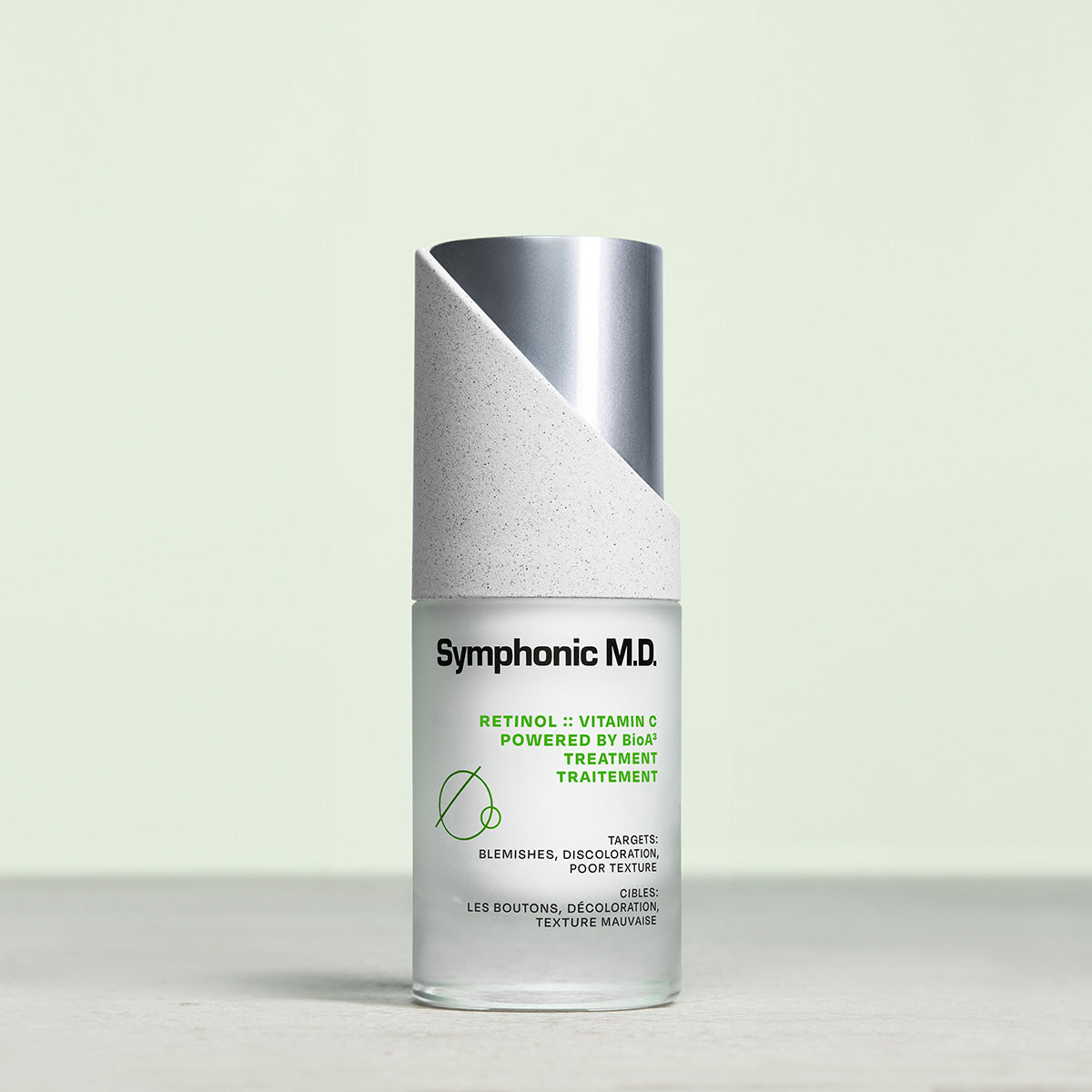
Retinol :: Vitamin C
This anti-inflammatory serum powered by BioA3 targets blemishes, tone, and texture — helping to clear bacteria and smooth skin without clogging pores.
Practical skincare regimen for treating male acne
If you're new to skincare, your first step should be getting into a routine. Just like working out or eating healthy, consistency over time makes a real difference.
Follow these tips to build an acne-proof skincare routine …
Re-evaluate the products you use
Check the labels on any skincare products that you're already using. The key words you're looking for are "non-comedogenic" and "oil-free". In other words, these products won't clog your pores and cause more acne.
You'll also want to look for ingredients such as salicylic acid, benzoyl peroxide, and other natural cleansers. These will remove oil from your pores without irritating your skin.
Wash your face
Wash your face twice a day, every day, with a cleanser formulated for acne-prone skin. Depending on when you work out, you may need to add a third cleansing session to your morning and evening routine.
You may have to trial a few cleansers before you find one that works for you. If you're happy with your cleanser, but sometimes get dry skin flakes or a greasy cleaning, then consider using an exfoliating cleanser once a week.
Not sure which cleanser would be best for your skin? Check out our comprehensive guide What Is A Cleanser & What Does A Face Cleanser Do For Your Skin? to find out everything you need to know about the different types of cleansers!
Try toning
A toner is a product that tightens up your pores and balances the pH level of your skin. It's often effective for people with very oily skin, but it doesn't work for everyone. Try it out for a few days, and see how your skin responds.
Use an acne treatment
You've cleansed, you've patted your face dry, you've toned … It's time for the acne treatment.
Acne treatments are products that you apply directly to breakouts. They're usually gels or creams. However, they're not miraculous! You'll need to apply them consistently to see results.
Moisturize
If you have oily skin or clogged pores, then you might be tempted not to moisturize. Won't it just make things worse?
Moisturizer is still essential if you have acne. It doesn't just soothe dry skin, but it helps keep your skin's natural oils under control. If you don't want to overdo it, look for light, oil-free moisturizers.
Use sunscreen
You need sun protection, and you need it every day. If you're going to see daylight for over 15 minutes, then it's worth applying sunscreen.
Sunscreen protects your skin from UV damage. In the long run, that means fewer signs of aging — and in the short run, it means less irritated skin. Look for a non-greasy sunscreen that's been designed for use on your face so that it doesn't clog your pores.
Use retinol
Retinol is one of skincare's most powerful tools against acne. It's a molecule derived from vitamin A that helps to draw out impurities from your pores.
Use retinol as part of your evening skincare routine. It's best avoided during the day because it makes you more sensitive to sun damage — and is less effective in sunlight.
To learn more about the benefits of using retinol and how long it takes retinol to work its magic, read our Retinol Timeline: How Long Does Retinol Take to Work?
Male acne and shaving
It's hard to avoid shaving. Even if you're rocking facial hair, you'll still need to trim and shape from time to time. But — as you probably know from experience — shaving and acne are not a good mix.
Shaving can trigger acne and cause razor bumps, which look like acne but are slightly different.
Razor bumps happen when the hair is cut and starts to grow back into the skin, creating ingrown hairs that irritate the hair follicle, redden the skin, and cause painful swelling.
Acne from shaving happens when your pores get clogged with oil, products, and dead skin. However, there are ways that you can minimize the problem.
Does shaving cause acne?
Shaving doesn't have to cause acne. However, you're more at risk if you're making any of these mistakes:
- Dirty or old razor blades. Older blades have bumps and scratches that can harbor bacteria, especially if you don't keep them clean. Every time you drag the razor across your face, all that bacteria will get dumped into your pores. Swap out the blades every 5-10 shaves to avoid this.
- Using the wrong products. Some shaving creams and gels can irritate the skin, making pimples more likely. Use products which are designed for men's faces, fragrance-free, and without dyes.
- Rinsing with hot water. Whether you're cleansing your face or cleaning up after a shave, always rinse with cold water. This helps close your pores against dirt and debris that can cause acne.
How to prevent acne from shaving
Follow these steps regularly to prevent acne after shaving.
- Stick to your skincare routine. Cleansing, exfoliating, and moisturizing twice a day will protect your skin and prepare it for a smooth, blemish-free shave.
- Consider using pre-shave oil. As well as shaving cream or gel, pre-shave oil can nourish and protect your skin while you shave.
- Choose the right tools ... A single-blade razor is less likely to cause razor bumps than a multi-blade razor. If you have super sensitive skin, then you might want to consider growing out that beard and not shaving at all.
- … and maintain them properly. Swap out your razor blades for fresh ones every 5-10 shaves. If you have trouble remembering, try a razor subscription, where the regular deliveries will serve as a reminder.
- Wash your razor every time. Rinse the blade after each stroke to remove dirt and debris that could build up on your skin. Once you're done, run the blade under hot water to remove bacteria.
- Try acne treatments. Combined with a regular skincare routine and careful shaving, acne treatments should be safe and effective for your skin. Plus, it's much easier to shave smooth, healthy skin!
Cleansing, exfoliating, and moisturizing twice a day will protect your skin and prepare it for a smooth, blemish-free shave.
Men's acne myth-busting
-
Myth: Only teenagers get acne
We have bad news for you: anyone can get acne. Some people will see breakouts for the first time in their 20s and 30s. -
Myth: Acne is caused by dirt
No, you don't get acne flare-ups because your skin is dirty. Washing or scrubbing too much can actually make it worse. However, a regular, gentle cleansing routine will help a lot. -
Myth: Eating chocolate and greasy foods causes acne
Scientists are still researching the links between acne and diet. So far, there is no proven mechanism that links fast food with breakouts. -
Myth: Stress causes acne
Stress doesn't directly cause acne, but it can increase the risk or make breakouts worse. -
Myth: Popping pimples makes them go away sooner
The opposite is true. When you squeeze a spot, you risk more inflammation and infection, resulting in lifelong scars. -
Myth: Getting a tan helps clear up acne
Too much sun exposure can damage and irritate your skin. You're not just risking acne, but wrinkles and skin cancer too. A tan is nice, but it's no skincare miracle. -
Myth: Acne will go away on its own
If you struggle with acne as an adult, then it typically will not go away on its own. You'll need a skincare routine, treatments, and/or a trip to the dermatologist.
The bottom line
Anyone can get acne — but anyone can also develop a positive skincare routine, too. There are lifestyle changes, techniques, and treatments that you can use to manage and reduce men's acne. Start with a gentle but thorough cleansing routine, and consider using active ingredients that help battle acne in your skincare products, such as vitamin C and retinol.
